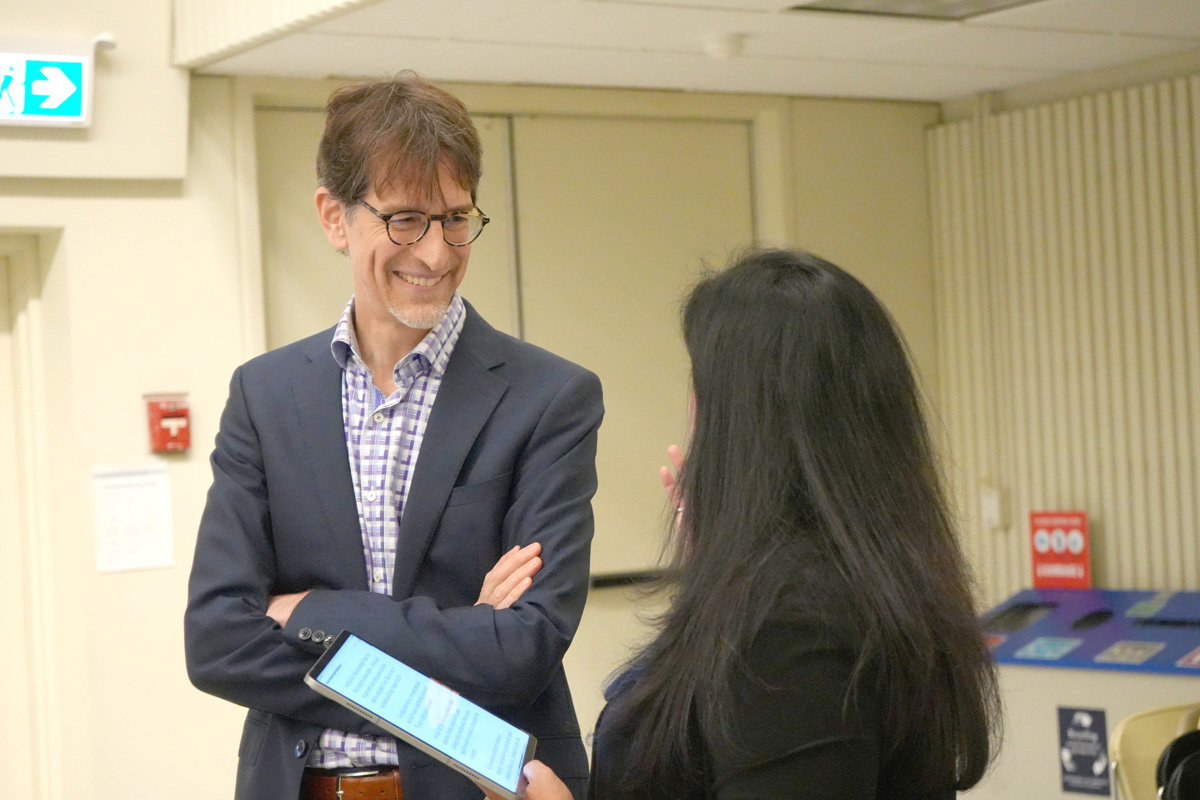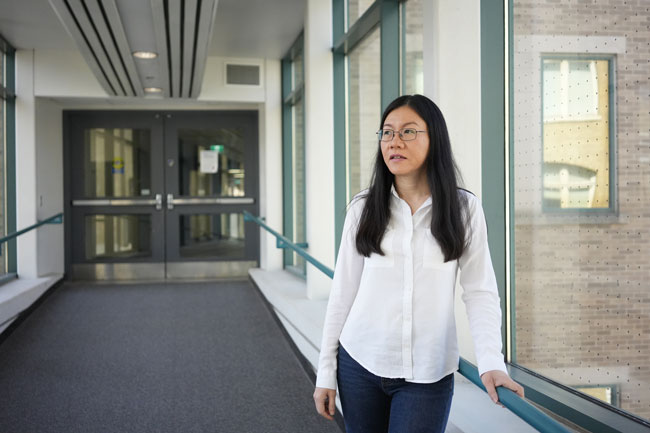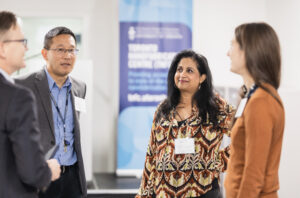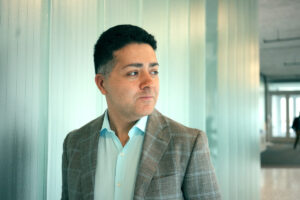
JUNE 24, 2024 • By Matthew Tierney
The Institute of Electrical and Electronics Engineers (IEEE) is the world’s largest technical professional organization with over 450,000 members whose contributions in engineering, science and technology have shown significant value to society. The IEEE mission is to advance technology for humanity.
Within IEEE are dozens of societies dedicated to areas of study. Currently, Professor Stark Draper is President of the IEEE Information Theory Society (ITSoc). The Edward S. Rogers Sr. Department of Electrical & Computer Engineering (ECE) has a history of professors accepting leadership positions at their respective home IEEE societies. We will be speaking to faculty members who are currently serving in senior leadership roles within IEEE.
ECE’s Matthew Tierney connected with Professor Draper to learn about his responsibilities, the challenges that come with them, and what makes a good technical leadership.
What are your responsibilities in your leadership role?
In our society, we make a five-year commitment to be an officer. Each year we assume a specific operational role: membership in year one, awards in year two, overall oversight and planning as president in year three. Then in year four we get a bit of a breather and, finally, handle appointments and bylaws in year five.
Bringing the perspective and lived experience of a long-time researcher to these roles is crucial. One’s technical experience informs all sorts of important decisions: from keeping publications and conferences and review processes running smoothly to contemporary questions like open access and hybrid events; from informing how the society can empower and help our members advance their science and their careers to how questions of diversity, inclusion, equity and belonging are considered and operationalized by a group of volunteers whose organization and perspective must be global.
Presidents are entrusted with keeping the machinery running smoothly. Our volunteers run the publications, manage the review processes and organize the conferences in which technical results are presented, and in which our students present their first results, network, build their profiles and ultimately find jobs.
It can be a learning curve, figuring out how to coordinate and empower people to contribute to and make an impact in such a large, distributed and diffuse organization. Even just arranging online calls where committee members are uniformly distributed across the world’s time zones – from the east to the west coast of North America, Australia, China, India, Europe — is a challenge, only eased by the commitment of our people to the society, our members and our mission.
What defines good technical leadership?
Leadership makes the soil fertile so that people can do their best work. To get those seeds to blossom, each president has a different approach, sometimes guiding, sometimes nudging the conversation in important directions, always trying to empower and support our members.
As one example, we’re piloting daylong workshops in our main conference. We are providing the organizers budget to bring people to our meeting researchers from other communities who don’t normally attend. This helps our volunteers build and foster connections and collaborations with researchers in neuroscience, machine learning, quantum, DNA storage, and other cognate fields.
As a second example, I was the first chair of the ITSoc Diversity and Inclusion Committee. ITsoc is a global organization so questions of diversity, inclusion, equity, and belonging take a wide variety of forms. We surveyed our members to identify barriers, set up methods to track participation of society members from currently under-represented groups, and developed mechanisms to support the participation of students coming from those groups.
As one example, consider the open access publishing model. This model requires the author or affiliated institution to pay to publish their paper, which can introduce barriers in parts of the world where funding is harder to come by. I think the key is to provide scaffolding so people can participate and contribute to our society, thereby also gaining the networking and recognition that contributes to their own career goals. The development of such pathways and helping people learn about those pathways, both are challenging.
Why is it important to you to give back to your profession in this way?
My answer to this tracks what I might say to someone who asked me, “Why are you a faculty member in ECE?”
I work in these organizations because I believe in their missions — in education and in research. I like working at a large public university because I believe we have important contributions to make to society in general which, among others, is to provide access to knowledge and socio-economic mobility in a sphere that’s bound to the public good.
I think about my professional society in a similar fashion, though it operates on a different scale. I mentioned scaffolding earlier. How do you build the scaffolding for people who want to be proactive and better the world? When you can see you have made a material difference that helps someone advance in their professional career, or in their research program, that is very rewarding. I think it’s the same in my work for the Information Theory Society and in my work as Vice-Dean Research for FASE. Being able to contribute to advance missions I believe in is why I take on these roles.


